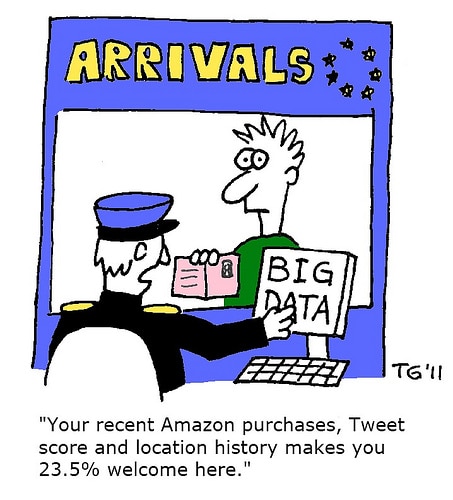Q: What if the hearing aid industry designed its own auditory augmentation “facilitory system” to compete with existing visions on the drawing boards of giant software and consumer electronics companies?
That rhetorical question, posed previously, envisioned an industry-wide platform strategy built on existing binaural, Bluetooth-enabled RIC-type products with the requisite amplification features married to emerging Hearable connectivities to the Internet of Things. The facilitory system would offer wearers open- and closed-fit “selections” to augment individuals’ near and far-field listening demands (e.g., speech of others, your voice commands, music, alerts, news, TV, concerts, lectures, etc.).
Of critical importance to the Demand function, hearing device manufacturers’ proprietary versions would be distinguished, priced and sold according to their system’s depth and breadth of licensed streaming directed-audio services and their ability to continuously monitor and curate listener preferences. Product success would be predicated on the degree to which wearer preferences were cataloged, matched in real time, and anticipated to maximize Utility.
Content Will be King
Bill Gates predicted the economic reign of Content on the Internet almost 20 years ago. One could argue that Content has called the shots economically and shaped government policy since Gutenberg invented the press over 500 years ago1, jumping onto each new media bandwagon as it came along.
The TV series Mad Men is itself a retrospective salute to Content’s power in print and broadcasting to shape social behavior and policy in the last half of the 20th century. Imagine today’s communication electronics industry if the nascent hearing aid industry had become Don Draper’s client in the 1950s.
When it comes to communication technologies, Gates’s 1996 essay on content channeled Marshall McLuhan‘s 1960s tantra, The Medium is the Massage:
If people are to be expected to put up with turning on a computer to read a screen, they must be rewarded with deep and extremely up-to-date information that they can explore at will. They need to have audio, and possibly video. (italics added)
Now, at last, it is the ear’s turn to get the audio massage and it’s not just any old ear or any old massage. It is the individual wearer’s pair of ears, ears of all ages (Fig 1), tuned to what and where the wearer expects and wants to hear; rewarded by hearing it transparently, comfortable, continuously, stylishly, with minimum interference, fuss and bother.
A: Were we to jump in and make an auditory facilitory system product that resonated with King Content and its legions of followers, we would deliver a huge Supply Side Shock and ascend to economic paradise. The hearing device industry would grow rapidly; it would be rich and powerful; Price would fall; product consumption would go through the roof; consumers would be happy. That’s a good, simple answer.
The more nuanced answer is the corollary to what happens when all those happy consumers demand more of their ear devices. Who knows what they would want next? Our industry would have to read consumers’ minds proactively to know and maintain market power. Measuring and predicting wearer preferences would catapult the industry into new arenas of Big Data and public policy. Not only would the industry be big, it would be data-heavy and heavily scrutinized. That’s a good, hard answer which changes the way we think and work while consuming a lot of resources that are presently scarce or entirely lacking.
Privacy, Security and Big Data
Fears of World Dominance, or at least threats to privacy, are certain to influence the timing, design, and selling and fitting of secure hearing aid and directed audio systems. (previous post)
The intent of that provocative quote is not to paint a picture of a vast hearing aid manufacturer cabal with designs on mass auditory thought control. The industry is not vast, it’s an oligopoly but not a cabal, and thought control is probably the last thing on its collective mind.
Nevertheless, the core of present and future hearing devices from all manufacturers is their sensor with two-way connectivity. We tend to think of hearing aids as single-directional devices that respond to changing conditions (e.g., environmental noise, binaural comparisons, wearer selection of manual programs) by selectively processing and delivering auditory data to the wearer in real time.
There is another direction, not yet captured from the sensors in our devices, that enables systematic collection, analysis, and exploitation of all that real-time data across wearers, empowering the sensors themselves to drive decision making. The Internet guru Tim O’Reilly, who talks of “feedback loops from devices to humans” for “human augmentation,” describes the reverse process of device sensors in this manner:
Big data analysis is on the back end, understanding and managing things. .[.there is] real-time prediction about many people in terms of context awareness, alerts and knowledge of my preferences. We will soon expect our devices to anticipate us in all sorts of ways.
So, What If?
Efforts are already underway to automate and monitor wearers’ hearing and hearing device function, effectively cutting out the middle man and streamlining the two-way data path (e.g., Ear Machine; incus; a variety of Hearable notions; headsets that read your mind and massage your auditory system; potentially, directed-audio speakers). As some of those efforts make it to market, and as devices begin to deliver and curate Content choices, the Demand curve will expand and usher in a new world of security and privacy concerns for consumers, providers, suppliers, and government regulations (e.g., HIPAA). Big Data will be in our midst.
Big Data is unfortunately named. Its very mention can elicit knee jerk reactions of hacked databases, profiling, and privacy invasions. A future post will consider the pros and cons of Big Data in hearing healthcare as we move from reflexive dislike to a more objective understanding of what it means for us. One thing is for sure: we are going to experience a reversal of clinical and policy concerns from auditory to privacy in the near future.
As ear-level devices and connectivity continue to improve hearing and listening experiences, Audiologists, manufacturers and the FDA will worry less about ensuring that wearers are hearing enough and more about ensuring that others are not picking up too much.
This is the 9th post in the Hearable series. Click here for post 1, post 2, post 3, post 4, post 5, post 6, post 7, post 8, post 10, post 11.
References and Footnotes
1A supporting example is the Bible, by far the biggest seller in biblical cultures for religious, political and education applications. Oxford and Cambridge university presses, begun in 1480 and 1534, controlled printing rights and exercised a Bible monopoly. All Bibles in the New World had to be imported at great cost until an enterprising Massachusetts press company printed the “Bay Psalm Book” in 1640 and broke the monopoly.
cartoon courtesy of Thierry Gregorius; feature image courtesy of pulse









